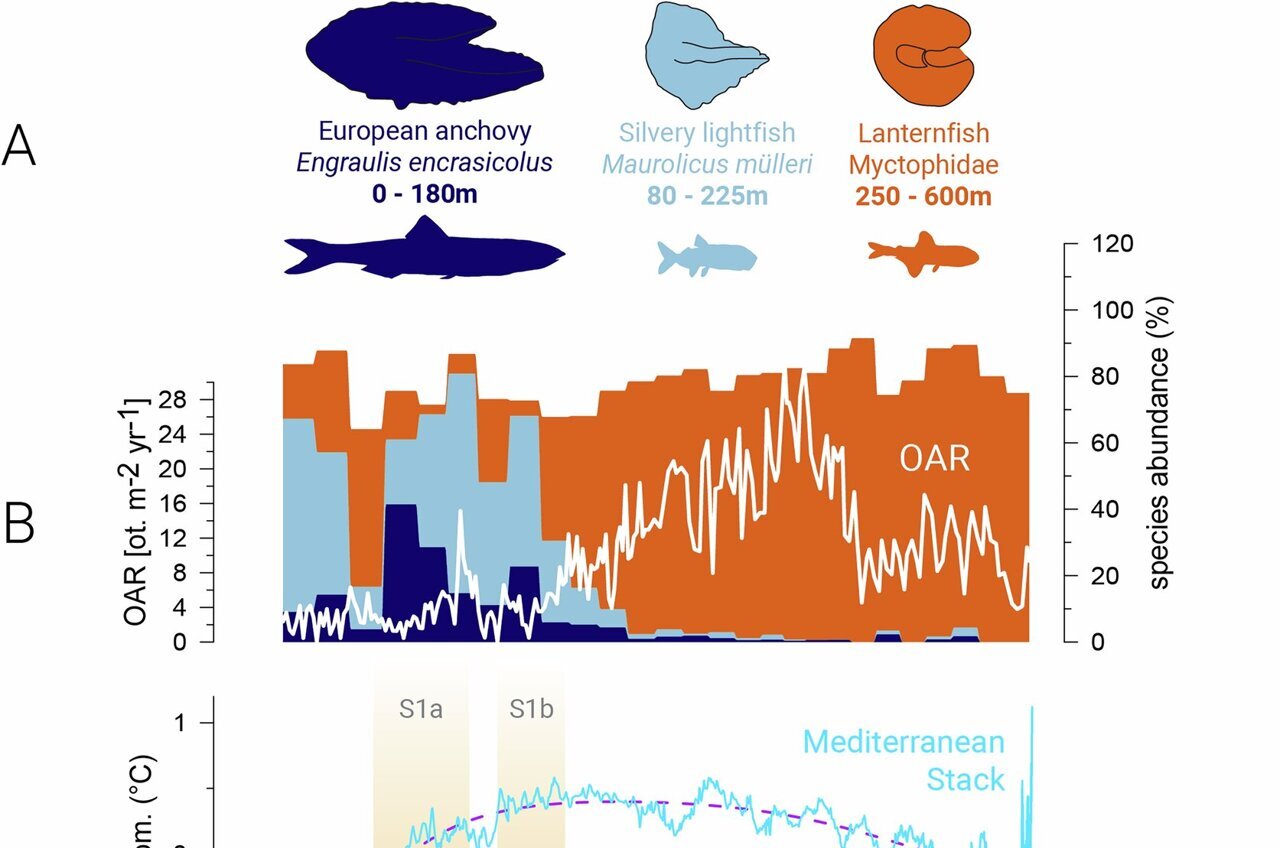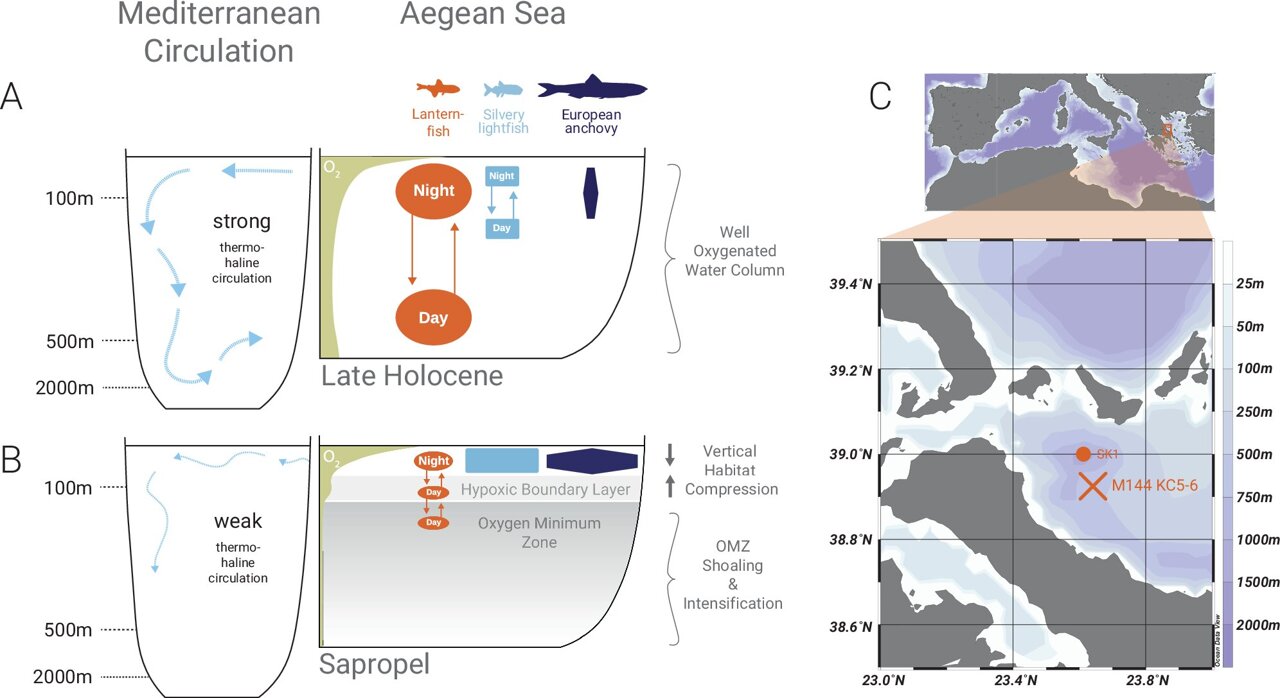Ocean Oxygen Drop Threatens Deep-Sea Fish and Marine Health, Study Warns

A global research project headed by the Institute of Environmental Science and Technology at the Universitat Autònoma de Barcelona (ICTA-UAB) in Spain explored how marine environments reacted to previous instances of oxygen depletion in the oceans. For this purpose, scientists examined fossilized remnants of lanternfish—the most widespread and significant group of deep-sea fish—found in sediment layers from the seafloor of the Eastern Mediterranean, which date back over 10,000 years. Their discoveries have been published in the journal Communications Earth & Environment .
Subscribe to our newsletter for the most recent science and technology news developments.
Tiny deep-ocean fish belonging to the Myctophidae family, known as lanternfish get their name from their capacity to generate light using specialized bioluminescence structures. Despite their modest size, they have an approximate total mass of 600 million tons, which makes them incredibly numerous across the world’s oceans, potentially earning them the title of the planet's most plentiful vertebrates in terms of weight.
By day, lanternfish reside in the dimmeso pelagic layer (ranging from 200 to 1,000 meters below the surface) as a strategy to avoid being seen by predators. At night, these fish travel up to the top of the ocean where they consume zooplankton. Because of their large numbers and daily movement between different depths, lanternfish have an essential function in influencing global climate patterns and maintaining marine food chains, effectively linking life at the water’s surface with that in deeper waters. For this reason, lanternfish are commonly regarded as a key species used to assess the condition of ecosystems found in the mesopelagic region.
Nevertheless, the fossil evidence indicates that lanternfish were mostly missing during times of severe low oxygen. Their return—in significant quantities—occurred once oxygen concentrations rose again, approximately 6,000 years back.
A group consisting of scientists from the Scripps Institution of Oceanography (U.S.), Woods Hole Oceanographic Institution (U.S.), Biodiversity Research Center under Academia Sinica (Taipei, Taiwan), McGill University (Canada), Freie Universität Berlin (Germany), and Heidelberg University (Germany) utilized fossil otoliths to recreate historical fish population data. The Eastern Mediterranean Sea, which has experienced alternating periods of oxygen-rich and extremely low-oxygen environments throughout the last 10,000 years, offered a distinctive natural record for examining the effects of deoxygenation on marine life.

The example of lanternfish highlights how things could unfold on a broader level if oxygen levels in the oceans keep dropping. Should a species with such significant numbers vanish, other sea creatures might also face danger, says Sven Pallacks, lead researcher of the study.
The Twilight Zone—the mesopelagic zone found between 200 and 1,000 meters below the surface—is crucial for Earth’s climate system, mainly due to its impact on the worldwide carbon cycle. Findings indicate that these mesopelagic environments are highly susceptible to declining oxygen levels. If they deteriorate, this could disrupt oceanic ecological stability, hinder its function in the global carbon process, and endanger marine life as well as world food supplies.
More information: Sven Pallacks and others, Ocean oxygen depletion associated with past declines in mid-depth fish populations, Communications Earth & Environment (2025). DOI: 10.1038/s43247-025-02568-8
Supplied by the Autonomous University of Barcelona
This narrative first appeared on .
Posting Komentar untuk "Ocean Oxygen Drop Threatens Deep-Sea Fish and Marine Health, Study Warns"
Please Leave a wise comment, Thank you